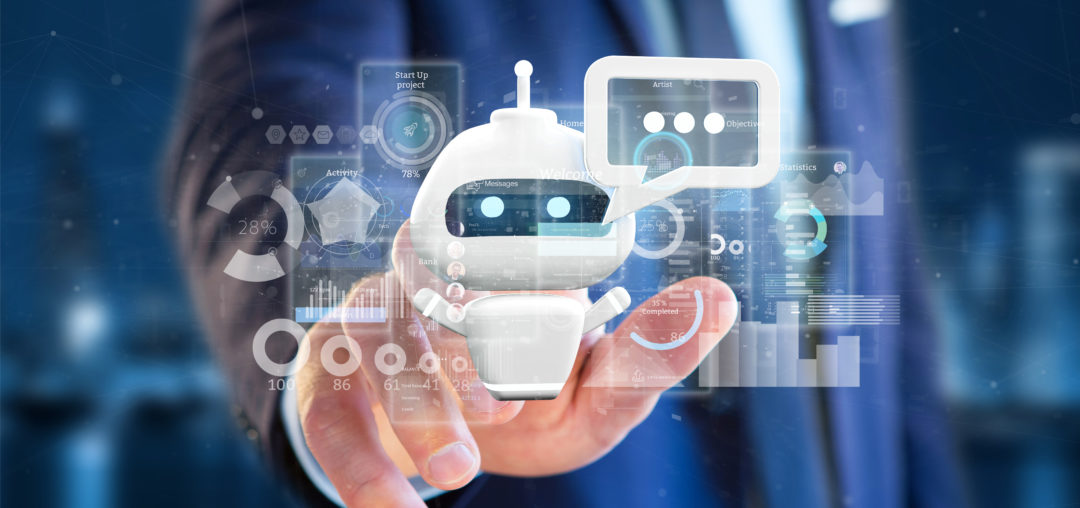A swimwear merchandiser for a popular high street retailer is commuting to her Monday sales and operations planning meeting. Right before her stop, Slack notifies her that the Oxford Circus brand showroom risks stocking out of its most popular line of swimwear in July — right before the summer school holidays. She urgently emails her supplier in Indonesia to check availability ahead of her meeting.
Who sent the merchandiser that Slack message? It wasn’t a ‘who’ but a ‘what’. Her inventory warning was delivered by a chatbot — an AI ‘agent’ now commonplace in consumer websites as a way to automate aspects of sales and customer service. Chatbots are now moving into modern workplaces to make the critical ‘last mile of analytics’ faster, easier and more valuable to everyday business users. They do this in part by improving people’s data fluency, enabling them to express ideas about data using a shared language. Data fluent workers can turn raw data into actionable information because they understand how to interpret it, know the data that is and isn’t available, as well as how to use it appropriately.
HR, chatbots and robotic process automation: key for digital transformation
Why does the ‘last mile of analytics’ matter? This is the domain of business users, and where adoption typically falls off. Despite data visualisation in business intelligence (BI) and analytics software vastly improving in the last decade, adoption is still too low — only 32% according to Gartner’s last survey note. If companies are serious about becoming data-driven they need a lot more than eye candy. Business people need timely, relevant, actionable data insights to succeed in their roles. Chatbots help to deliver on all these points — here’s how:
1. Push notifications and discovery
We’re just at the stage where AI-driven systems can detect changes, anomalies and outliers in data sets, then use chatbots to push relevant information out to users based on their roles, interests and preferences. In the future, this will become more sophisticated, not only pushing out information on changed data, but also adding insights to that data. In older systems users need IT to set up rules manually if they want to be alerted to critical changes to data. Not only is this a slow and rigid process, but you also need to know what you’re looking for. It excludes the majority of data scenarios that users can’t foresee in advance.
2. Messaging integration
Every day more workers are connected through messaging platforms like Slack and Microsoft Teams. According to recent research from Spiceworks, 21% of businesses are using Microsoft Teams and 15% of businesses are using Slack. When Slack’s imminent IPO happens, we can expect to see more pervasive enterprise adoption.
Why does this matter? As in my opening example, analytics software can use chatbots to deliver data information through messaging platforms to desktop and mobile devices. Our own sales and marketing people get alerts from chatbots on data changes in Salesforce through their Slack channels. Data conversations are happening much more today in these environments than they ever did in relatively smaller analyst user communities.
The history of the chatbot: Where it was and where it’s going
3. Conversational analytics
This is where things start to get really exciting. With conversational analytics, users interact by messaging or voice with chatbots. Essentially it’s about being able to have a conversation with your data, any time anywhere. Let’s say our merchandise planner wants to know more about why that particular line of swimwear is running low on inventory. She can ask the chatbot why that’s happening and what the drivers are behind the trend. This ability to be able to talk freely to a bot using natural language is really the future of analytics in the workplace.
Chatbots make ideal data messengers
I’ll be the first to admit that chatbots weren’t universally popular at first. For example, Facebook had to scale back its chatbots after 70% of its interactions failed due to communications difficulties. Some consumers get a bit creeped out when they go onto a website and a sales chatbot pops up. In customer support scenarios, however, chatbots are becoming a lot more popular. This is especially true when someone just needs a simple and specific answer to a question like “what’s the Wi-Fi code for my router?”
Similarly, chatbots make the ideal for the ideal messengers for data information in organisations that are trying to raise the data literacy of their business users. Data questions are 100% deterministic — there is only one right answer. This means there is no expectation for a chatbot to possess the level of human language ambiguity and perfect syntax, which might be expected in a more personal sales conversation. Once people get over the initial weirdness of conversing with a machine, they start to feel comfortable asking data questions safe in the knowledge that they aren’t being judged or rushed along by an impatient data expert.
Chatbots and human customer services; does artificial intelligence replace or complement humans?
Finally chatbots are popular with millennials, for whom messaging is second nature. Research by mobile marketer 3C Interactive revealed that 40% of millennials said they interacted with a bot daily, and that figure continues to trend upward. Chatbots provide that instant gratification that millennials are conditioned to expect from growing up with search engines. This is important because with millennials soon to be the largest age demographic in the global workforce, more corporate IT strategies include seeking technologies designed to attract and retain young talent.
If you’re serious about becoming a data-driven organisation, chatbots offer great potential to improve BI and analytics. Not only can chatbots help raise adoption rates, but they can help all your people become more data literate and make smarter business decisions.








